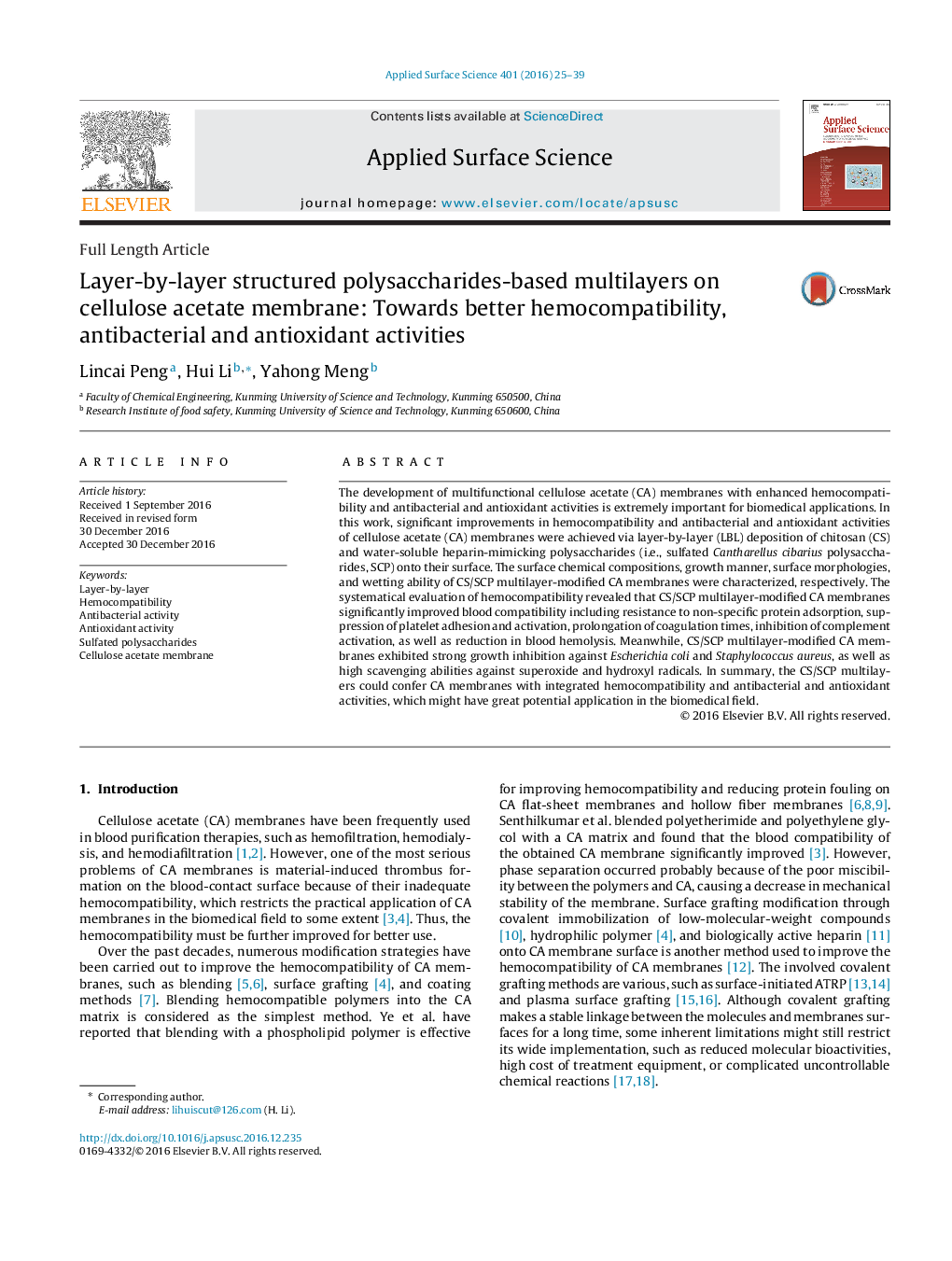| Article ID | Journal | Published Year | Pages | File Type |
|---|---|---|---|---|
| 5352779 | Applied Surface Science | 2017 | 15 Pages |
Abstract
The development of multifunctional cellulose acetate (CA) membranes with enhanced hemocompatibility and antibacterial and antioxidant activities is extremely important for biomedical applications. In this work, significant improvements in hemocompatibility and antibacterial and antioxidant activities of cellulose acetate (CA) membranes were achieved via layer-by-layer (LBL) deposition of chitosan (CS) and water-soluble heparin-mimicking polysaccharides (i.e., sulfated Cantharellus cibarius polysaccharides, SCP) onto their surface. The surface chemical compositions, growth manner, surface morphologies, and wetting ability of CS/SCP multilayer-modified CA membranes were characterized, respectively. The systematical evaluation of hemocompatibility revealed that CS/SCP multilayer-modified CA membranes significantly improved blood compatibility including resistance to non-specific protein adsorption, suppression of platelet adhesion and activation, prolongation of coagulation times, inhibition of complement activation, as well as reduction in blood hemolysis. Meanwhile, CS/SCP multilayer-modified CA membranes exhibited strong growth inhibition against Escherichia coli and Staphylococcus aureus, as well as high scavenging abilities against superoxide and hydroxyl radicals. In summary, the CS/SCP multilayers could confer CA membranes with integrated hemocompatibility and antibacterial and antioxidant activities, which might have great potential application in the biomedical field.
Keywords
Related Topics
Physical Sciences and Engineering
Chemistry
Physical and Theoretical Chemistry
Authors
Lincai Peng, Hui Li, Yahong Meng,
